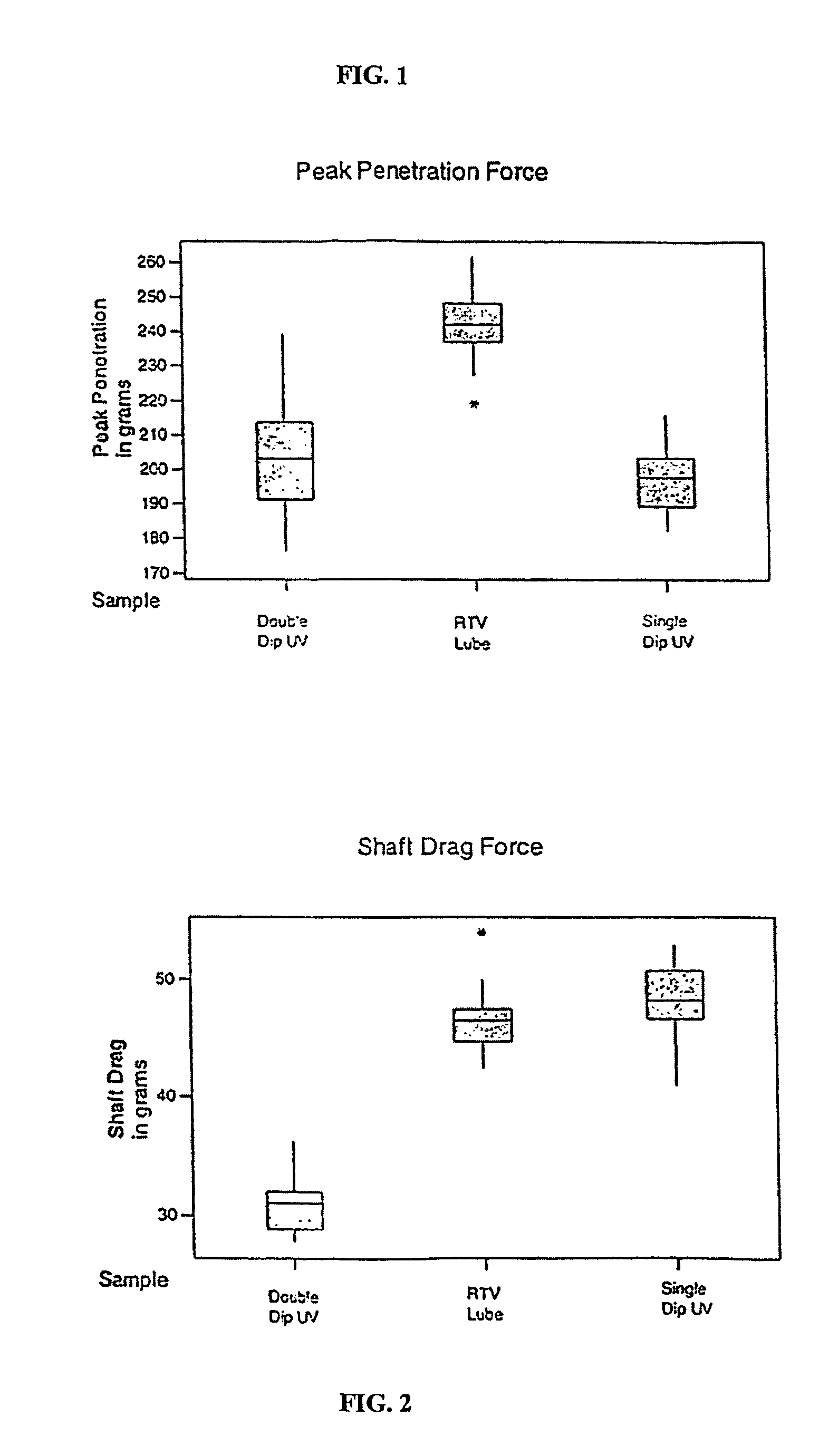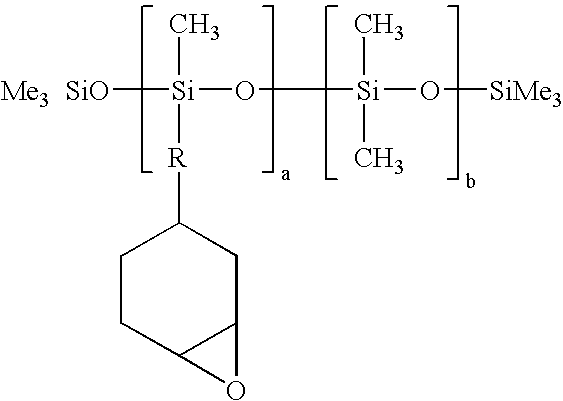Medical device lubricant comprising radiation curable silicon material
a technology of radiation curable silicon and lubricant, which is applied in the direction of medical science, catheters, coatings, etc., can solve the problems of prior art methods of lubricating medical devices with extended cure times, and achieve the effect of eliminating the delay of a lengthy cure step and improving performan
- Summary
- Abstract
- Description
- Claims
- Application Information
AI Technical Summary
Benefits of technology
Problems solved by technology
Method used
Image
Examples
example 1
Single Coating Lubrication Method
[0028]Silcolease PC-675: A UV / EB curable silicone-epoxy copolymer from Rhodia Silicones.
[0029]Silocolease PC-702: An iodonium borate photoinitator for use as a UV / EB cure catalyst from Rhodia Silicones.
[0030]Rapi-Cure DDVE: A UV / EB curable dodecylvinylether from International Specialty Polymers.
[0031]NuSil Med-361: 350 Cst. Polydimethylsiloxane fluid from NuSil.
[0032]NuSil MED 4162: A fully cured polydimethylsiloxame copolymer dispersed in a carrier solvent.
[0033]Silocolease PC-702 works as a catalyst for both of the UV / EB curable components. It is contemplated within the scope of the invention that other sources for the materials of the novel lubricant may be used.
[0034]Formulation:
[0035]
NuSil MED-41625.1%NuSil MED-3611.5%Silcolease PC-6751.4%Rapi-Cure DDVE0.5%Silcolease PC-7020.1%Hexane91.4%
[0036]In this illustrative example, the inventive lubricant was prepared by mixing the above components in the percentages listed with a compatible organic carr...
example 2
Two Step Coating Method
[0037]This method consists of three steps:[0038]1. Applying a first coating of the formulation listed in the Single Coat Lubrication Method described above.[0039]2. Curing the lubricant on the needle by exposure to a UV light source.[0040]3. Applying a second coat of silicones dispersed in carrier solvent.
[0041]The cure step is included to insure that a solvent-based second coat will not wash away a portion of the first coat. A typical second coat would be a mixture of approximately 6% MED-361, or approximately 1% MED-361 and approximately 5% NuSil MED-4162, diluted in a carrier solvent.
example 3
Comparison of Penetration Forces
[0042]The following data was collected using 21 gage needles and West Co. 1888-127 Gray drug vial stoppers. The needles were penetrated into the stopper using a Sintech Universal Testing Machine operating at 200 mm / minute. The results are set forth in FIG. 1 and FIG. 2.
[0043]Although the inventive lubricant uses a variety of epoxy silicone copolymers, it is contemplated within the scope of the invention that other radiation curable silicones may be used within the inventive lubricant. Likewise, while onium type photoinitiators are used within the inventive lubricant, it is contemplated within the scope of the invention that other photoinitiators compatible with the radiation curable silicone may be used.
PUM
| Property | Measurement | Unit |
|---|---|---|
| cure time | aaaaa | aaaaa |
| force | aaaaa | aaaaa |
| cutting forces | aaaaa | aaaaa |
Abstract
Description
Claims
Application Information
 Login to View More
Login to View More - R&D
- Intellectual Property
- Life Sciences
- Materials
- Tech Scout
- Unparalleled Data Quality
- Higher Quality Content
- 60% Fewer Hallucinations
Browse by: Latest US Patents, China's latest patents, Technical Efficacy Thesaurus, Application Domain, Technology Topic, Popular Technical Reports.
© 2025 PatSnap. All rights reserved.Legal|Privacy policy|Modern Slavery Act Transparency Statement|Sitemap|About US| Contact US: help@patsnap.com


